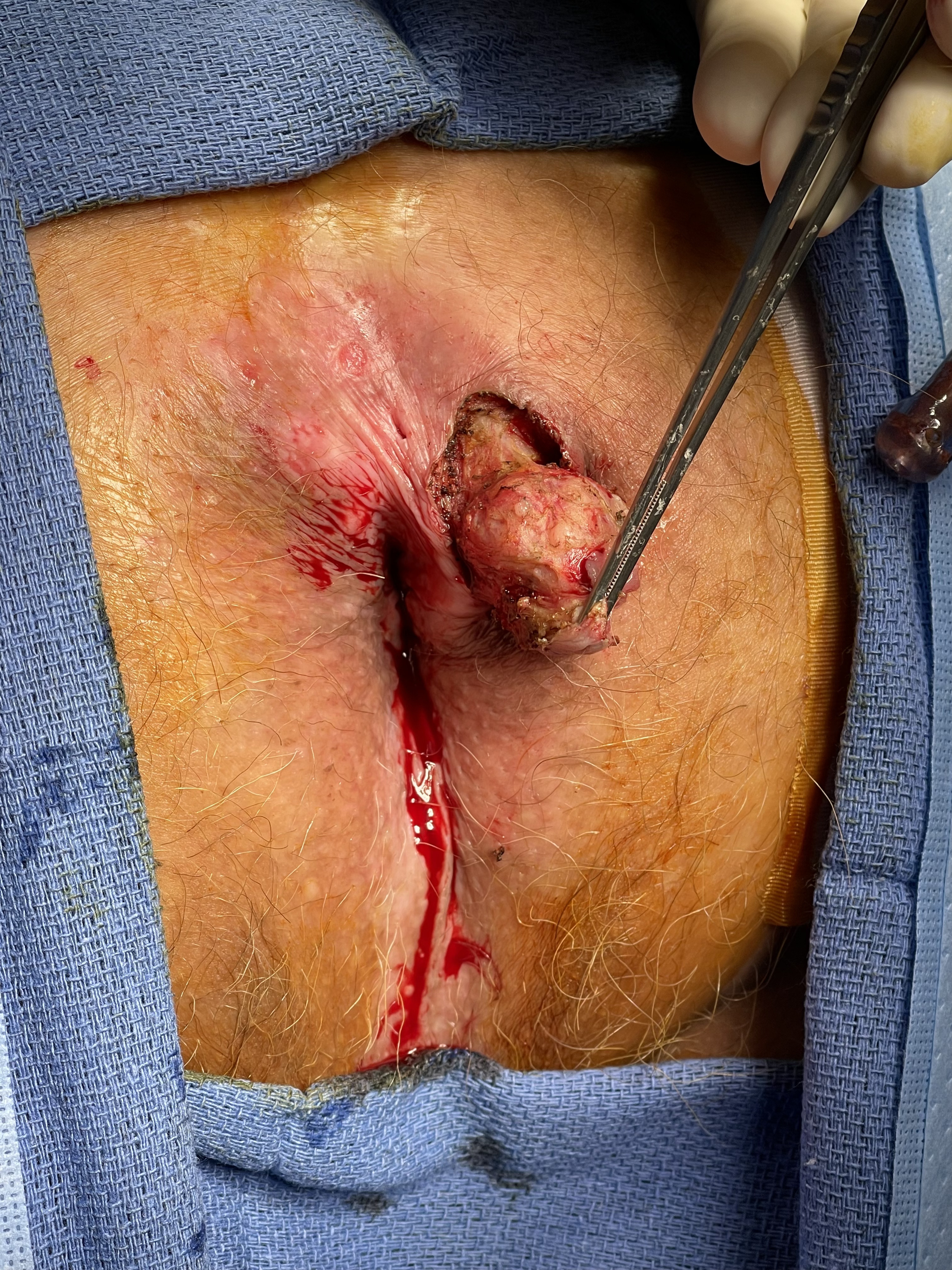PURPOSE/BACKGROUND:
Clinical experience in the accurate diagnosis of squamous cell carcinoma of the anal canal (SCAC) remains elusive. In addition to being rare, anal cancer is asymptomatic in nearly 30% of cases. Only one third of cases present with an anal mass, and an additional smaller proportion present as atypical or extra-colonic lesions. Herein, we describe the case of SCAC in a patient who presented with a draining perianal cystic mass. Furthermore, we review and summarize the available literature for atypical manifestations of this rare malignancy.
METHODS/INTERVENTIONS:
A 74-year-old M male who presented with 6 months of perianal drainage from a suspected fistula-in-ano. The patient is heterosexual, human immunodeficiency virus negative, and had no known human papillomavirus exposure. Perianal examination revealed a prominent lump in the right posterolateral position with a draining sinus along the posterior midline with and overlying skin thickening which extended laterally to involve the anal margin which was biopsied. The lump was biopsied.
RESULTS/OUTCOME(S):
The patient was taken to the operating room wherein en bloc excision of the mass, overlying skin and draining sinus were achieved. Pathology revealed the mass to be invasive basaloid (cloacogenic) squamous cell carcinoma with high-grade dysplastic changes at the superficial peripheral margin. The deep margin was negative for invasive carcinoma. Lateral anal margin biopsy revealed a squamous cell carcinoma arising from a probable condyloma extending to the deep biopsy margin. The patientís post-operative carcinoembryonic antigen was 1.8 ng/mL, and a staging computed tomography of the chest, abdomen and pelvis was negative for metastatic disease. Radiation therapy was given concurrently with chemotherapy. Over a 6-week course, a total dose of 5040 cGy was administered to the area of gross disease, while the adjacent lymph node area received a dose of 3060 to 3600 cGy. The patient tolerated the therapy as described without complication and remains under surveillance.
SUMMARY:
SCAC may present as common anorectal lesions such as hemorrhoids, fistulas, and pilonidal cysts. However, to our knowledge, this is the first description of a SCAC manifesting as a perianal cyst. The amorphous nature of SCAC should warrant a high index of suspicion when atypical lesions of the anal canal or perianal region are encountered in practice. Perianal lesions with unusual or worrisome features should warrant clinicopathologic assessment with a biopsy.
